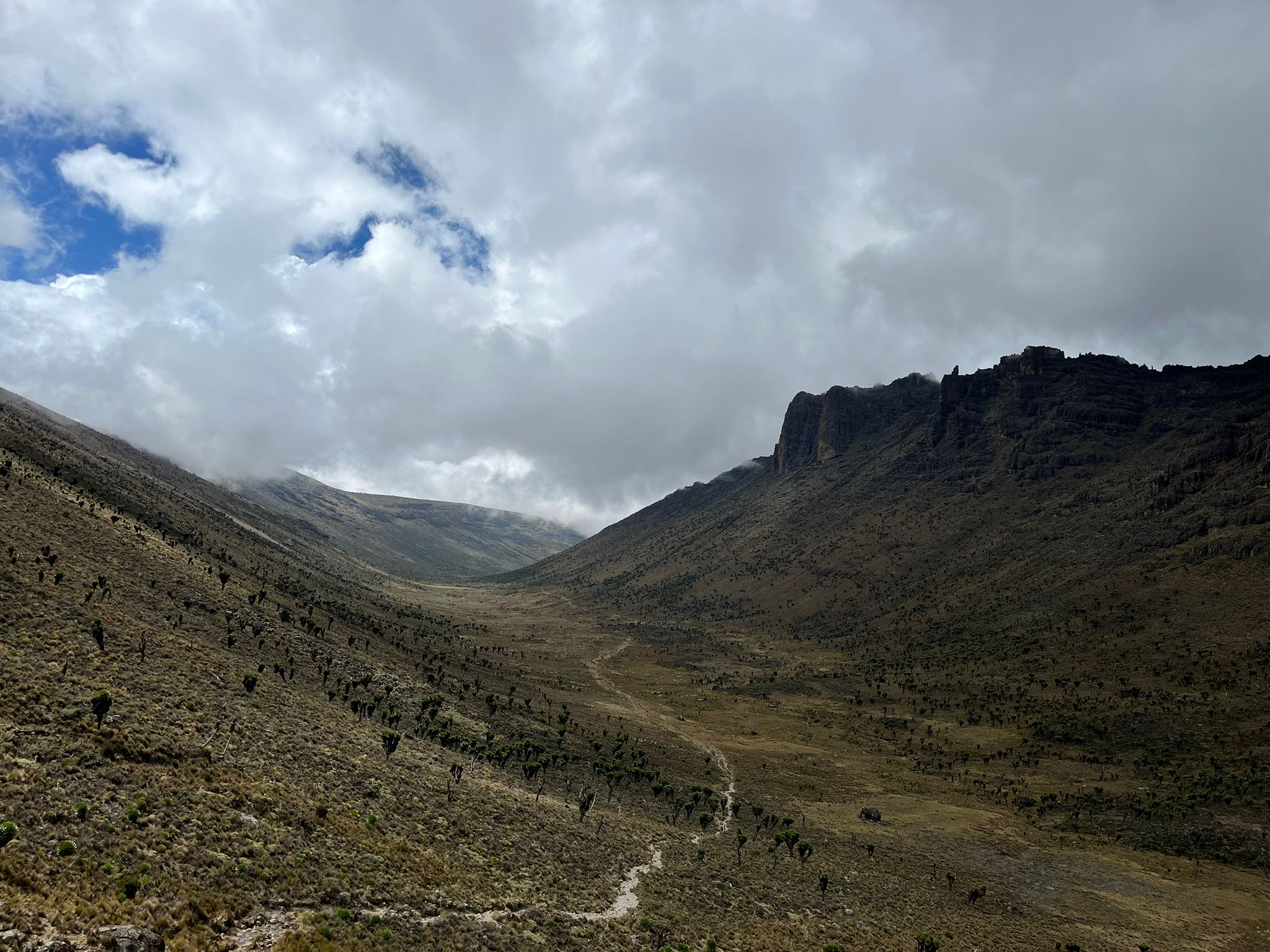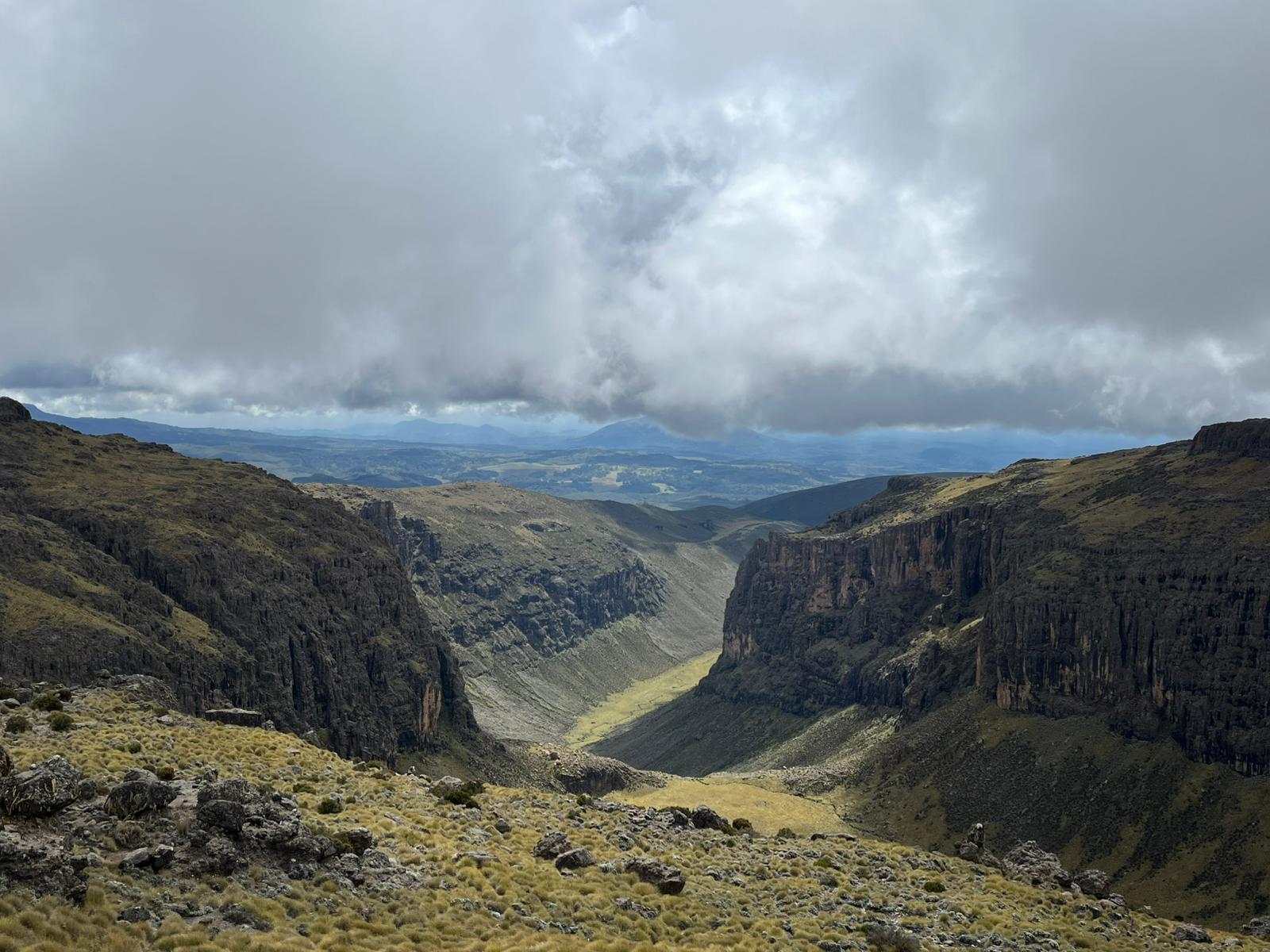Mount Kenya National Park is a stunning and ecologically diverse protected area surrounding Mount Kenya, the second-highest mountain in Africa after Mount Kilimanjaro. Located in central Kenya, the park is a UNESCO World Heritage site and offers an extraordinary mix of natural beauty, wildlife, and adventure. Here’s a detailed description of Mount Kenya National Park: Geography and Landscape Mount Kenya stands at 5,199 meters (17,057 feet) above sea level, and its towering peaks form the centerpiece of the park. The mountain is an ancient extinct volcano with a unique geography that includes glaciers, rocky ridges, and expansive valleys. The park covers an area of 715 square kilometers (276 square miles) and is characterized by a variety of ecosystems, from dense rainforests at lower altitudes to alpine meadows and glaciers higher up. Peaks: The main peaks of Mount Kenya are Batian, Nelion, and Point Lenana. Batian and Nelion are technical climbs that require mountaineering expertise, while Point Lenana is more accessible for trekkers and offers breathtaking panoramic views. The park also has glaciers (such as Lewis Glacier and Tyndall Glacier) at its higher elevations, although these are rapidly retreating due to climate change. Climate The climate in Mount Kenya National Park varies greatly depending on the altitude. The lower parts of the park experience a tropical climate with dense rainforests, while the higher elevations can have a temperate or alpine climate, characterized by cooler temperatures and snow or ice on the highest peaks. The park experiences a bimodal rainfall pattern, with the long rains occurring from March to May, and the short rains from October to December. Flora and Fauna Mount Kenya National Park is home to a remarkable range of plant and animal life that adapts to the varied climates and altitudes: Flora: The park features several distinct vegetation zones: Montane Forests: These lush rainforests cover the lower and middle slopes of the mountain, home to various species of hardwood trees like podocarpus, cedar, and fig trees. Moorland: Above the forest zone, the moorland is dominated by giant lobelias, heather, and senecio trees. The high-altitude meadows are rich with alpine plants that thrive in cooler conditions. Alpine Zone: Above 4,000 meters (13,123 feet), the vegetation thins out, and the land is mostly barren rock and snow. Wildlife: The park is rich in biodiversity, though wildlife is primarily concentrated in the lower regions due to the harsh conditions at higher altitudes. Notable animals include: Elephants, buffaloes, and baboons are common in the lower forested regions. The Mount Kenya bush viper, a rare and unique species, is found here, as well as various monkeys, like the Colobus monkeys. Mountain species such as the black leopard and the golden cat are elusive and harder to spot but do inhabit the park. Bird species: The park is home to a variety of birdlife, including buzzards, eagles, and cranes. Trekking and Mountaineering Mount Kenya National Park is renowned for its trekking and mountaineering opportunities. Hikers can explore several routes that vary in difficulty: Naro Moru Route: One of the most popular routes, suitable for climbers looking to reach Point Lenana. It’s a relatively easy trek and takes about 4-5 days. Sirimon Route: A scenic route that is known for being slightly less crowded, offering a more peaceful trekking experience. Chogoria Route: This is the longest route and offers incredible views of glaciers, alpine meadows, and the surrounding landscape. Batian and Nelion: Climbing these peaks requires technical skills, mountaineering experience, and proper equipment, as they involve rock climbing. Cultural and Historical Significance Mount Kenya holds immense cultural importance for the ** Kikuyu people**, the largest ethnic group in Kenya. The mountain is considered sacred, and it plays a prominent role in their spiritual beliefs. It is referred to as "Kirinyaga" in Kikuyu, meaning "the place of brightness." The Kikuyu people historically believed that their god, Ngai, resided on the mountain’s peaks. The park also holds historical significance, as Jomo Kenyatta, Kenya's first president, spent part of his life in this region. It’s also believed to be the area where early explorers like Halford Mackinder and J. S. Williams began their efforts to climb and study the mountain. Conservation Efforts Mount Kenya National Park is an important area for conservation, not only because of its rich biodiversity but also because it is a critical water catchment area. The mountain is the source of many rivers that feed into the Tana River, Kenya's longest river, providing water to millions of people across the central and eastern regions of the country. Efforts are being made to protect the park from illegal activities such as poaching, logging, and encroachment. The Kenyan government and conservation organizations are focused on preserving the delicate ecosystems in the park, especially as climate change threatens the mountain's glaciers and wildlife habitats. Attractions and Activities Scenic Views and Photography: The park offers stunning views, especially from the high-altitude points like Point Lenana, where you can see vast stretches of the surrounding landscape, including the Great Rift Valley and the savannah below. Nature Walks and Birdwatching: The diverse flora and fauna make the park an excellent location for nature walks and birdwatching. Camping: There are designated camping sites within the park where visitors can immerse themselves in nature. Fishing: Fishing is available at Lake Alice on the lower slopes of the mountain, a serene spot for relaxation. Mount Kenya National Park is a true gem, offering a unique blend of natural beauty, rich biodiversity, and cultural significance. It provides an opportunity for both adventurous trekkers and those seeking peaceful nature walks to experience its diverse ecosystems. Whether you are climbing to the summit, exploring its forests and lakes, or simply soaking in the scenic views, Mount Kenya National Park is an unforgettable destination.





















